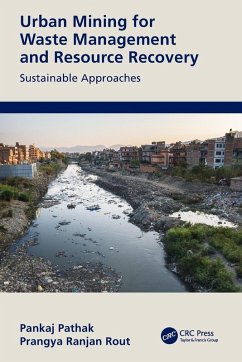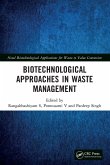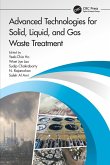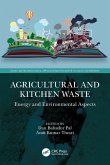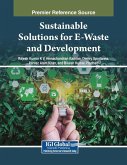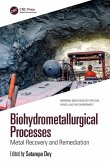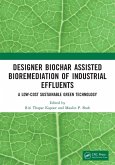Urban Mining for Waste Management and Resource Recovery
Sustainable Approaches
Herausgeber: Pathak, Pankaj; Ranjan Rout, Prangya
Urban Mining for Waste Management and Resource Recovery
Sustainable Approaches
Herausgeber: Pathak, Pankaj; Ranjan Rout, Prangya
- Broschiertes Buch
- Merkliste
- Auf die Merkliste
- Bewerten Bewerten
- Teilen
- Produkt teilen
- Produkterinnerung
- Produkterinnerung
Scientific management strategies can help in exploring anthropogenic wastes (human-made materials) as potential resources through the urban mining concept and be a panacea for sustainable development.
Andere Kunden interessierten sich auch für
![Biotechnological Approaches in Waste Management Biotechnological Approaches in Waste Management]() Biotechnological Approaches in Waste Management61,99 €
Biotechnological Approaches in Waste Management61,99 €![Waste Management Waste Management]() Waste Management102,99 €
Waste Management102,99 €![Advanced Technologies for Solid, Liquid, and Gas Waste Treatment Advanced Technologies for Solid, Liquid, and Gas Waste Treatment]() Advanced Technologies for Solid, Liquid, and Gas Waste Treatment65,99 €
Advanced Technologies for Solid, Liquid, and Gas Waste Treatment65,99 €![Agricultural and Kitchen Waste Agricultural and Kitchen Waste]() Agricultural and Kitchen Waste63,99 €
Agricultural and Kitchen Waste63,99 €![Sustainable Solutions for E-Waste and Development Sustainable Solutions for E-Waste and Development]() Sustainable Solutions for E-Waste and Development180,99 €
Sustainable Solutions for E-Waste and Development180,99 €![Biohydrometallurgical Processes Biohydrometallurgical Processes]() Biohydrometallurgical Processes67,99 €
Biohydrometallurgical Processes67,99 €![Designer Biochar Assisted Bioremediation of Industrial Effluents Designer Biochar Assisted Bioremediation of Industrial Effluents]() Designer Biochar Assisted Bioremediation of Industrial Effluents63,99 €
Designer Biochar Assisted Bioremediation of Industrial Effluents63,99 €-
-
-
Scientific management strategies can help in exploring anthropogenic wastes (human-made materials) as potential resources through the urban mining concept and be a panacea for sustainable development.
Produktdetails
- Produktdetails
- Verlag: CRC Press
- Seitenzahl: 290
- Erscheinungstermin: 7. Oktober 2024
- Englisch
- Abmessung: 229mm x 152mm x 16mm
- Gewicht: 424g
- ISBN-13: 9781032061801
- ISBN-10: 1032061804
- Artikelnr.: 71578957
- Herstellerkennzeichnung
- Libri GmbH
- Europaallee 1
- 36244 Bad Hersfeld
- gpsr@libri.de
- Verlag: CRC Press
- Seitenzahl: 290
- Erscheinungstermin: 7. Oktober 2024
- Englisch
- Abmessung: 229mm x 152mm x 16mm
- Gewicht: 424g
- ISBN-13: 9781032061801
- ISBN-10: 1032061804
- Artikelnr.: 71578957
- Herstellerkennzeichnung
- Libri GmbH
- Europaallee 1
- 36244 Bad Hersfeld
- gpsr@libri.de
Dr. Pankaj Pathak is an Assistant Professor at SRM University, Andhra Pradesh, India, with a keen interest in sustainable waste management, green energy resources, and geochemistry, including sustainable handling of hazardous waste and associated environmental impacts. She has been involved in various research projects viz., waste to resource, nuclear waste management and characterization of buffer materials, and e-waste management. She has also gained research expe-rience in dealing with hazardous solid and liquid waste treatment technology, along with hydrometallurgical recovery of metals from waste streams, their safe disposal, and remediation techniques. Dr. Prangya Ranjan Rout is presently serving as an Assistant Professor in the Department of Biotechnology, Thapar Institute of Engineering and Technology, Patiala, Punjab, India. He also worked as a researcher at INHA University, Incheon, Republic of Korea from 2018-2020. He holds an MTech degree in bio-technology and a PhD in environmental engineering. His research interest lies in the domain of anaerobic digestion, bioconversion of wastes to wealth, emerg-ing contaminant removal, membrane technology, resource recovery and reuse, and wastewater treatment. He has authored over 50 publications, including ref-ereed journal articles, book chapters, national and international conference pre-sentations, technical notes, and a published patent. Some of the awards he has received include the Odisha Young Scientist Award 2017, Best Practice Oriented Paper 2019 from ASCE-EWRI, and Outstanding Reviewer 2019 from ASCE. He is an Associate Editor of theASCE Journal of Hazardous, Toxic, and Radioactive Wastes and has served as a guest editor of a special issue of the journal. He is also actively involved in editing contributed book volumes for internationally renowned publishers, such as CRC Press/Taylor & Francis, John Wiley & Sons, and ASCE.
Section 1: Introduction 1. Basic Concepts, Potentials and Challenges of
Urban Mining Section 2: Solid Waste management 2. Food Waste 3.
Construction and Demolition Waste 4. Biomedical Waste Section 3: Liquid
Waste Management 5. Domestic Wastewater 6. Agricultural Wastewater 7.
Industrial Wastewater Section 4: Solid Waste Treatment 8. Municipal Solid
Waste 9. Industrial Solid Waste Section 5: Liquid Waste Treatment 10.
Municipal Wastewater Treatment 11. Industrial Wastewater Treatment 12.
Summary and Conclusions
Urban Mining Section 2: Solid Waste management 2. Food Waste 3.
Construction and Demolition Waste 4. Biomedical Waste Section 3: Liquid
Waste Management 5. Domestic Wastewater 6. Agricultural Wastewater 7.
Industrial Wastewater Section 4: Solid Waste Treatment 8. Municipal Solid
Waste 9. Industrial Solid Waste Section 5: Liquid Waste Treatment 10.
Municipal Wastewater Treatment 11. Industrial Wastewater Treatment 12.
Summary and Conclusions
Section 1: Introduction 1. Basic Concepts, Potentials and Challenges of
Urban Mining Section 2: Solid Waste management 2. Food Waste 3.
Construction and Demolition Waste 4. Biomedical Waste Section 3: Liquid
Waste Management 5. Domestic Wastewater 6. Agricultural Wastewater 7.
Industrial Wastewater Section 4: Solid Waste Treatment 8. Municipal Solid
Waste 9. Industrial Solid Waste Section 5: Liquid Waste Treatment 10.
Municipal Wastewater Treatment 11. Industrial Wastewater Treatment 12.
Summary and Conclusions
Urban Mining Section 2: Solid Waste management 2. Food Waste 3.
Construction and Demolition Waste 4. Biomedical Waste Section 3: Liquid
Waste Management 5. Domestic Wastewater 6. Agricultural Wastewater 7.
Industrial Wastewater Section 4: Solid Waste Treatment 8. Municipal Solid
Waste 9. Industrial Solid Waste Section 5: Liquid Waste Treatment 10.
Municipal Wastewater Treatment 11. Industrial Wastewater Treatment 12.
Summary and Conclusions

